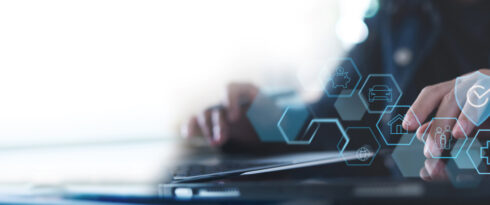
Internet of…education
Modern education is no longer a quill-with-ink reality. Everything around us has taken a giant leap forward, do you ever wonder what impact it will have? How to get used to the new?
The revolution in schools is something young people highly anticipate, as opposed to teachers who may have hard time getting accustomed to the new rules. What exactly is in stock for them? Internet of Things offers solutions that will make the time spent in the classroom much more efficient.
How? Take a look at a few examples:
1. Attendance
Just imagine how much time could be saved if checking attendance, a very mundane task, is eliminated? How to do it? Students may wear special wrist bands that verify their identity the moment they enter the classroom and sit at their desks. Additionally, these bands are usually equipped with sensors, which provide an option of measuring brain activity. Thanks to that, it is possible to show which students need more attention from the teacher and which can excel on their own.
2. The lesson itself
We are all aware of the fact that nowadays laptops and tablets are nothing out of the ordinary in the classrooms. Why not use them to teacher’s advantage? Whenever students need ‘taming’, teachers may send delicate vibrations to their devices to calm them down.
3. Homework at…school?
In the USA, on the other hand, Salman Khan wants to change the traditional way lessons work. ‘Flipped classrooms’ are the innovative idea that engages students to study at home, on their own. The knowledge needed to do this is divided into tutorials and can be accessed on the Internet. Since all the knowledge can be acquired at home, are schools no longer necessary? Well, quite the opposite. They have become the very place to do… homework. Teachers are there to provide students with advice and guidance. Not to teach per se however. Quite a shift, isn’t it?
This is not all though, fully-conducted computer lessons can be more interesting and engage pupils to solve problems and expand their creativity.
Other facilitations offered by Internet of education can be used at universities, however they aren’t very educational. For example, to make dorm students’ life easier, there’s a simple notification send to everyone on unused dryers or other appliances. Also, some schools equip their new students with QR codes that inform them of the locations of classrooms.
Internet of education is at its very beginning, ready to develop. What can be done right now is to get accustomed to the new, techy reality. There is a however fear that the most renowned professors may refuse getting used to the change. What then? Will they eventually be replaced with virtual realities?
-
Future Processing had its impact in education as well, thanks to cooperating with one of our Clients – Pulsion Technology.
The result of our work with Pulsion Technology is EVA – customisable software supporting self-evaluation as part of the schools inspection regime in Scotland. The evaluation process includes input from both parents and teachers. We have also provided the Client with a webpage, where a suite of reports can be accessed.
We are particularly proud of this project because of its range – as we were responsible for delivering the entire solution, we were able to offer a whole range of skills to include graphic design and UX engineers – thereby reducing the burden on the Client from an internal resource perspective.



